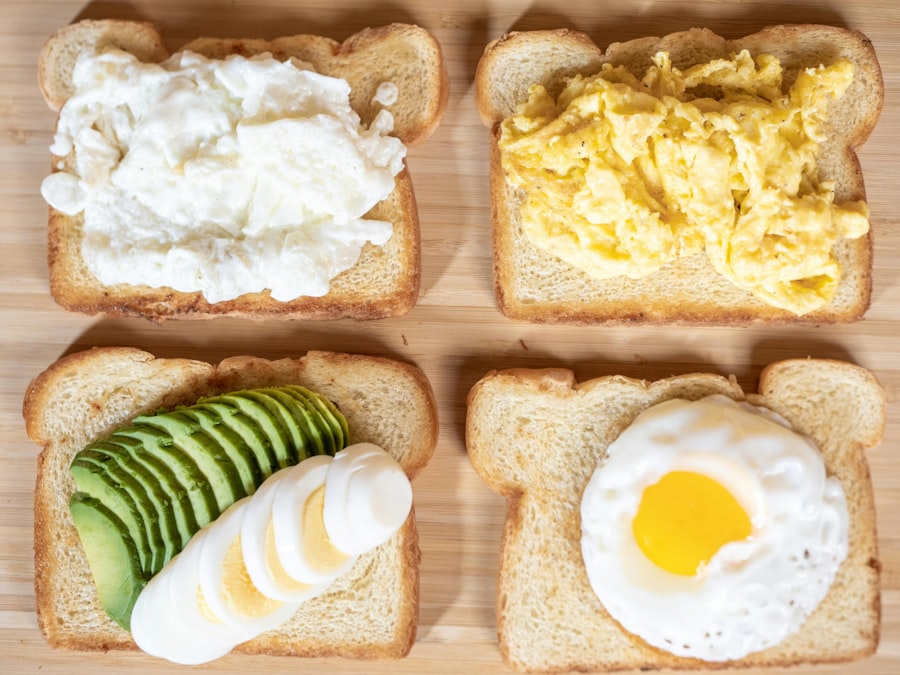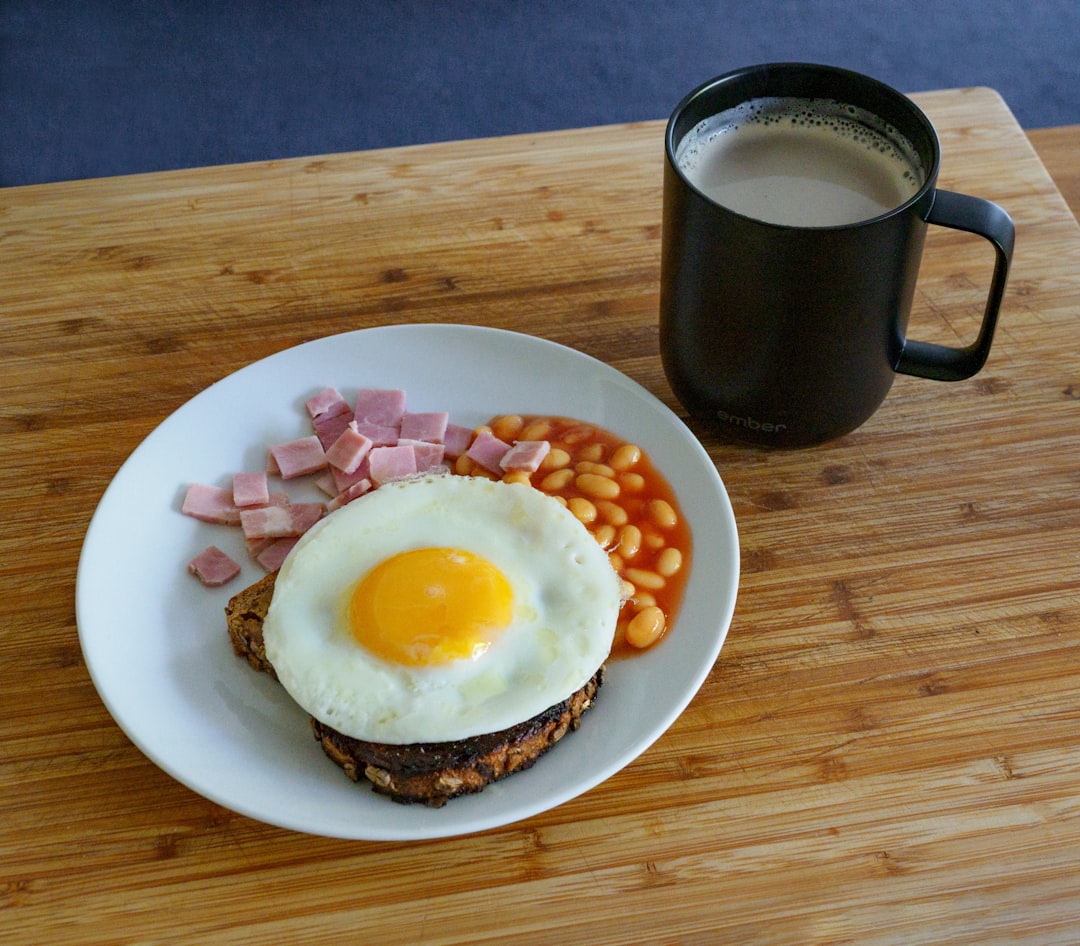The Glycemic Index (GI) is a valuable tool that helps you understand how different foods affect your blood sugar levels. It ranks carbohydrates on a scale from 0 to 100 based on how quickly they raise blood glucose levels after consumption. Foods with a high GI are rapidly digested and absorbed, leading to quick spikes in blood sugar, while low GI foods are digested more slowly, resulting in a gradual rise in blood sugar.
This distinction is particularly important for you, especially if you are managing conditions like diabetes or simply aiming for better overall health. When you choose foods with a low GI, you can enjoy more stable energy levels throughout the day. This is because low GI foods provide a steady release of glucose into your bloodstream, which can help you avoid the energy crashes that often follow high-GI meals.
Understanding the glycemic index empowers you to make informed dietary choices that can enhance your well-being and support your long-term health goals.
Key Takeaways
- Understanding the Glycemic Index:
- The glycemic index (GI) measures how quickly a food raises blood sugar levels.
- Foods with a low GI are digested and absorbed more slowly, leading to a gradual rise in blood sugar levels.
- Importance of Low GI Breakfast for Seniors:
- A low GI breakfast can help seniors maintain steady energy levels throughout the day.
- It can also aid in managing weight and reducing the risk of chronic diseases such as diabetes and heart disease.
- Whole Grain Cereal Options:
- Whole grain cereals like oatmeal, bran flakes, and muesli are excellent low GI breakfast options for seniors.
- Low GI Fruit Choices:
- Berries, apples, pears, and oranges are low GI fruits that can be included in a senior’s breakfast for added nutrients and fiber.
- Protein-Rich Breakfast Ideas:
- Including eggs, Greek yogurt, and nut butter in breakfast can provide seniors with essential protein for muscle health and satiety.
- Incorporating Healthy Fats:
- Adding avocado, nuts, and seeds to breakfast can provide healthy fats that support brain health and reduce inflammation.
- Low GI Dairy Products:
- Low-fat milk, yogurt, and cheese are low GI dairy options that can be included in a senior’s breakfast for calcium and protein.
- Nutritious Smoothie Recipes:
- Seniors can enjoy low GI smoothies made with spinach, berries, Greek yogurt, and almond milk for a quick and nutritious breakfast option.
- High Fiber Breakfast Options:
- High fiber breakfast options like whole grain toast, chia seeds, and flaxseeds can aid in digestion and promote heart health for seniors.
- Low GI Breakfast Recipes for Seniors with Diabetes:
- Seniors with diabetes can benefit from low GI breakfast recipes such as vegetable omelets, quinoa porridge, and whole grain pancakes.
- Tips for Balancing Low GI Breakfast with Other Meals:
- Seniors can balance their low GI breakfast with other meals by incorporating a variety of nutrient-dense foods throughout the day, including lean proteins, healthy fats, and plenty of fruits and vegetables.
Importance of Low GI Breakfast for Seniors
As you age, maintaining stable blood sugar levels becomes increasingly important. A low GI breakfast can play a crucial role in this process. Starting your day with foods that have a low glycemic index can help you manage your energy levels and mood throughout the morning.
This is particularly beneficial for seniors, as fluctuations in blood sugar can lead to irritability, fatigue, and even cognitive decline. By opting for low GI options, you can set a positive tone for the rest of your day. Moreover, a low GI breakfast can aid in weight management, which is often a concern as you grow older.
Foods that are lower on the glycemic index tend to be more filling and satisfying, helping you avoid unnecessary snacking before lunch. This can be especially helpful if you’re trying to maintain a healthy weight or prevent weight gain. By prioritizing low GI breakfasts, you not only support your physical health but also enhance your overall quality of life.
Whole Grain Cereal Options

When it comes to breakfast cereals, whole grains are your best bet for a low GI start to the day. Whole grain cereals are packed with fiber and nutrients, making them an excellent choice for seniors looking to maintain their health. Options like steel-cut oats or whole grain bran cereals are particularly beneficial, as they have a lower glycemic index compared to their refined counterparts.
These cereals provide sustained energy and keep you feeling full longer, which is essential for managing hunger throughout the morning. Incorporating whole grain cereals into your breakfast routine can be both delicious and nutritious. You might consider adding toppings like fresh berries or nuts to enhance flavor and nutritional value.
Not only do these additions provide extra fiber and antioxidants, but they also contribute to a more satisfying meal. By choosing whole grain cereals, you’re making a conscious effort to prioritize your health while enjoying a tasty breakfast.
Low GI Fruit Choices
| Fruit | Glycemic Index (GI) |
|---|---|
| Apples | 38 |
| Pears | 38 |
| Oranges | 40 |
| Strawberries | 40 |
| Cherries | 22 |
Fruits are an essential part of a balanced diet, but not all fruits are created equal when it comes to their glycemic index.
These fruits not only add natural sweetness to your meal but also come packed with vitamins, minerals, and antioxidants that support overall health.
Their lower glycemic index means they won’t cause rapid spikes in blood sugar, making them ideal choices for maintaining stable energy levels. You can enjoy these fruits in various ways during breakfast. For instance, adding sliced apples or berries to your whole grain cereal can create a delightful combination of flavors and textures.
Alternatively, blending low GI fruits into smoothies can provide a refreshing and nutritious start to your day. By choosing the right fruits, you can enhance your breakfast while keeping your glycemic response in check.
Protein-Rich Breakfast Ideas
Including protein in your breakfast is essential for maintaining muscle mass and promoting satiety as you age. Protein-rich foods help stabilize blood sugar levels and keep you feeling full longer, which is particularly important for seniors who may be more prone to weight fluctuations.
These foods not only provide high-quality protein but also offer essential nutrients that support overall health. You might experiment with different ways to prepare these protein-rich options. For example, scrambled eggs with spinach and tomatoes make for a delicious and nutritious breakfast that is low on the glycemic index.
Alternatively, a bowl of Greek yogurt topped with low GI fruits and nuts can create a satisfying meal that fuels your day ahead. By prioritizing protein in your breakfast choices, you’re taking an important step toward maintaining your health and vitality.
Incorporating Healthy Fats

Healthy fats are an essential component of a balanced diet, especially for seniors looking to support heart health and cognitive function. Incorporating sources of healthy fats into your breakfast can enhance flavor while providing lasting energy. Foods like avocados, nuts, seeds, and olive oil are excellent choices that can complement your morning meal without causing significant spikes in blood sugar.
For instance, spreading avocado on whole grain toast creates a deliciously creamy breakfast option that is both satisfying and nutritious. You might also consider adding a handful of nuts or seeds to your yogurt or cereal for an extra crunch and boost of healthy fats. By including these nutrient-dense options in your breakfast routine, you’re not only enhancing the taste but also supporting your overall health.
Low GI Dairy Products
Dairy products can be an excellent source of protein and calcium, but it’s important to choose options that align with your low GI goals. Low-fat or non-fat dairy products like Greek yogurt or cottage cheese are great choices that provide essential nutrients without significantly impacting blood sugar levels. These dairy options can be versatile additions to your breakfast, allowing you to create a variety of delicious meals.
You might enjoy Greek yogurt topped with low GI fruits and a sprinkle of nuts for added texture and flavor. Alternatively, cottage cheese mixed with sliced peaches or berries can create a refreshing breakfast option that is both satisfying and nutritious. By selecting low GI dairy products, you’re ensuring that your breakfast supports your health while still being enjoyable.
Nutritious Smoothie Recipes
Smoothies can be an excellent way to pack a variety of nutrients into one convenient meal. When creating smoothies for breakfast, focus on incorporating low GI ingredients to keep your blood sugar stable throughout the morning. Start with a base of unsweetened almond milk or Greek yogurt for protein and creaminess.
Then add in low GI fruits like berries or green apples along with leafy greens such as spinach or kale for added vitamins and minerals. You might also consider adding healthy fats like avocado or nut butter to create a more filling smoothie that keeps you satisfied until lunchtime. A simple recipe could include spinach, frozen berries, almond milk, and a tablespoon of almond butter blended until smooth.
This nutrient-dense smoothie not only tastes great but also provides a balanced mix of carbohydrates, protein, and healthy fats to kickstart your day.
High Fiber Breakfast Options
Fiber is an essential nutrient that plays a crucial role in digestive health and blood sugar management. As you plan your breakfasts, consider incorporating high-fiber options that align with low GI principles. Foods like chia seeds, flaxseeds, oats, and legumes are excellent sources of fiber that can help keep you feeling full while supporting overall health.
For example, overnight oats made with rolled oats, chia seeds, almond milk, and topped with low GI fruits create a deliciously satisfying breakfast option rich in fiber. Alternatively, consider making a savory breakfast bowl with quinoa or barley mixed with vegetables and topped with an egg for added protein and fiber content. By prioritizing high-fiber options in your breakfast routine, you’re taking proactive steps toward better digestive health and stable energy levels.
Low GI Breakfast Recipes for Seniors with Diabetes
For seniors managing diabetes, crafting low GI breakfasts is essential for maintaining stable blood sugar levels while still enjoying delicious meals. One simple recipe could be a vegetable omelet made with eggs or egg whites filled with spinach, tomatoes, and bell peppers served alongside whole grain toast. This meal provides protein and fiber while keeping the glycemic impact low.
Another option could be overnight oats prepared with rolled oats soaked in unsweetened almond milk topped with chia seeds and fresh berries. This combination offers a satisfying balance of carbohydrates and protein while remaining low on the glycemic index. By focusing on these types of recipes, you can enjoy flavorful breakfasts that support your health needs without compromising on taste.
Tips for Balancing Low GI Breakfast with Other Meals
Balancing your meals throughout the day is key to maintaining stable blood sugar levels and overall health. When planning your breakfasts, consider how they fit into the larger context of your daily meals. Aim for consistency by incorporating similar low GI principles into lunch and dinner as well.
This approach will help reinforce healthy eating habits while ensuring that you’re not experiencing significant fluctuations in blood sugar. Additionally, pay attention to portion sizes when enjoying low GI foods; even healthy options can lead to imbalances if consumed in excess. Pairing carbohydrates with protein and healthy fats at each meal can further stabilize blood sugar levels throughout the day.
By being mindful of how you structure all of your meals—including breakfast—you’ll be better equipped to maintain optimal health as you age. In conclusion, understanding the glycemic index and its implications for meal planning is vital for seniors looking to enhance their health through diet. By prioritizing low GI breakfasts filled with whole grains, fruits, proteins, healthy fats, and fiber-rich options, you can set yourself up for success each day while enjoying delicious meals tailored to your needs.
When considering low glycemic index (GI) breakfast options for the elderly, it’s important to focus on meals that provide sustained energy and help manage blood sugar levels. Foods like oatmeal, whole grain toast, and yogurt with berries are excellent choices. For more detailed information on maintaining a healthy diet for seniors, you can explore this
